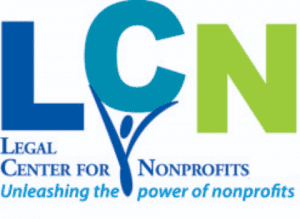One of the first questions to deal with when forming a nonprofit corporation is whether the nonprofit will have a voting membership. This seems like a simple concept, but in the nonprofit context, membership has a number of meanings, and the result is often confusion.
Voting members are analogous to shareholders. For-profit corporations have shareholders who invest in the corporation, and profits are shared with shareholders in the form of dividends, with certain matters brought before the shareholders for a vote.
In the nonprofit world, however, there are no shareholders. Instead, there may be members. Since the payment of dividends is prohibited, and profits are reinvested into the nonprofit’s charitable mission, what role remains for members? Like their shareholder cousins, nonprofit members retain a right to vote and have a say in the nonprofit’s governance.
When is it appropriate for a nonprofit to have voting members? If a nonprofit is “inward-looking”—as it would be if it is a professional society or social club that exists, in part, to provide some benefit to a group of individuals—a voting membership is appropriate because these individuals will have an interest in how the nonprofit is managed.
On the other hand, if the nonprofit is “outward-looking,” —i.e., it looks outward to the recipients of its charitable work—voting membership is not necessary. The board of directors should be focused on looking to the organization’s charitable beneficiaries, not to any interest group inside the organization.
Some nonprofit founders consider a voting membership if they are looking for an additional level of accountability, a body beyond the board of directors, to keep an eye on things and ensure the nonprofit stays on its proper path.
A few key points about voting members to keep in mind:
- Members must meet and vote. Usually an annual meeting of the members is held. At a minimum, voting members usually elect the board of directors.
- Members have rights. Precisely what rights members have depends on the state and on the nonprofit’s bylaws. In Massachusetts, the bylaws may specify or limit the rights of members; otherwise, the members will have the right to elect the directors and to vote on other major transactions of the corporation. In any event, the bylaws should state the parameters of membership and voting rights.
- Member records must be kept. Where there are members, their vote may be required by law for certain actions of the nonprofit, and if the membership cannot be ascertained, a specific procedure may be necessary for the action to occur.
- Members must be engaged. Getting members to attend meetings is a function of their level of engagement, and engagement requires focused effort to keep them interested and involved in the work of the nonprofit.
Finally, a word about the other kind of members—what we might call fundraising members. These are the members whose role is to support the nonprofit through their membership fees. This has become a reliable source of additional income for nonprofits. Organizations invite their supporters to become members, but instead of a vote, members are invited into a closer relationship with the nonprofit through newsletters, events, and of course, the opportunity to give further in support of its mission.
Both types of membership can be important to the structure and operation of the nonprofit organization. But it’s essential to be clear about the type of members and their role in the nonprofit.
In our next blog, we’ll discuss the 1023 EZ form and how you can tell if you are compliant.
The foregoing is provided for information and educational purposes only and does not constitute legal advice. Consult an attorney or accountant for advice regarding your organization’s specific situation.
